Initial release date 1983 | Cabinet Upright Series Donkey Kong | |
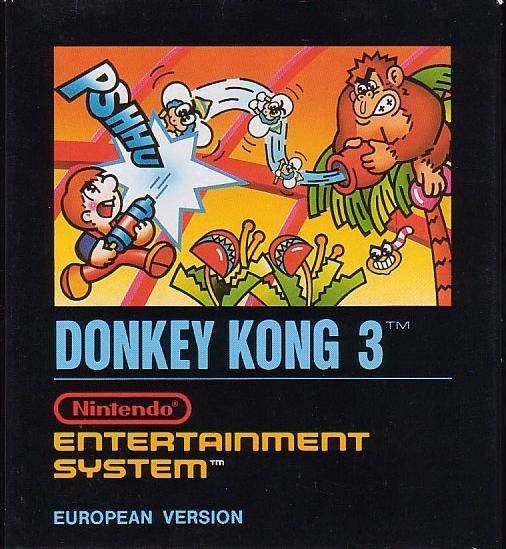 | ||
Release date(s) October 31, 1983ArcadeJP: October 31, 1983NA: November 1, 1983EU: December 25, 1983Famicom/NESJP: July 4, 1984NA: June 23, 1986EU: September 15, 1987FM-7JP: 1984PC-88JP: 1984 Developers Nintendo, Nintendo Research & Development 1 Similar Donkey Kong games, Shigeru Miyamoto games, Platform games | ||
Donkey kong 3 arcade gaming historian
Donkey Kong 3 (ドンキーコング3, Donkī Kongu Surī) is the third video game in the original Donkey Kong series by Nintendo. It was released near simultaneously for the arcades and Family Computer, and later released in America on the Nintendo Entertainment System in 1986. The game was re-released on the Wii Virtual Console in North America on July 14, 2008 and in Europe on January 9, 2009. Although it is a sequel, this title is a departure in gameplay from previous titles.
Contents
- Donkey kong 3 arcade gaming historian
- Donkey kong 3 nes mike bootsy
- Story
- Gameplay
- Reception
- Legacy
- References
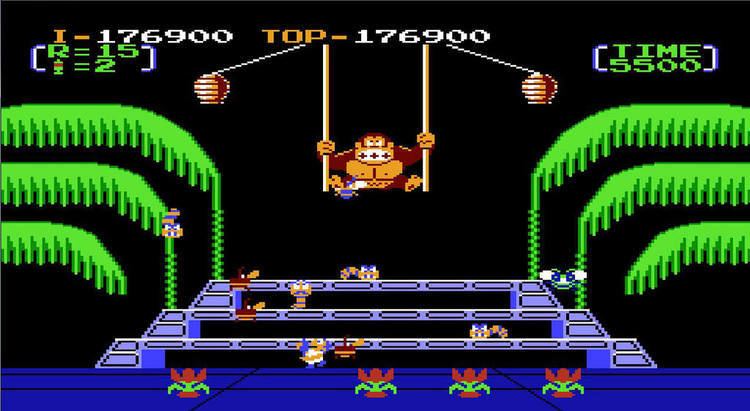
Donkey kong 3 nes mike bootsy
Story
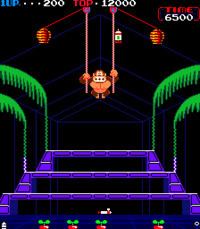
Stanley is a bugman. Donkey Kong has taken refuge in his greenhouse and it is now up to Stanley to stop the ape from stirring up any more insects that will soon destroy his flowers. Stanley saves the flowers by spraying bug spray on Donkey Kong.
Gameplay
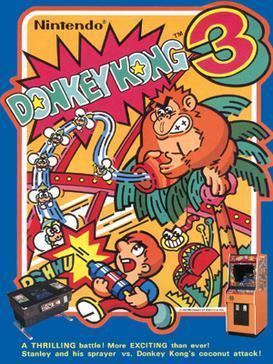
The game is a shooter which incorporates ideas from Space Firebird, an earlier Nintendo arcade game, and adapts them into a new setting.
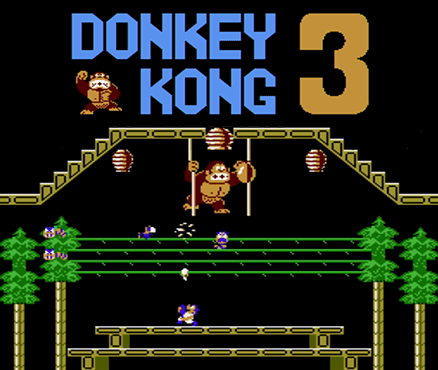
Donkey Kong hangs from vines at the center of the screen, and the player-controlled Stanley the exterminator runs and jumps on platforms beneath him. Stanley can fire bug spray at both Donkey Kong and insects flying around the levels. A level is completed by continually using bug spray on Donkey Kong, forcing him to the top of the screen, or by killing all of the bugs. A super spray can on the vines falls down when Donkey Kong is sprayed past it. The super spray only lasts for a limited number of shots, but it pushes Donkey Kong upward at a much faster rate, making it easier to complete the level. It only appears at the start of each life.
The insects are buzzbees, beespies, queen bees (which shatter into deadly pieces when destroyed), creepy caterpillars, butterflies, beetles, moths, beebombs and vine eaters. Some of the flying insects attempt to pick up the flowers at the bottom of the screen and carry them away. This decreases the bonus at the end of the round.
There are three levels which repeat in a fixed sequence.
Reception
Computer and Video Games said that the game's "fast action and superior sound effects" made Donkey Kong 3 a "sure hit" in arcades.
IGN gave the Virtual Console version a 6.0 out of 10, describing it as a "radical departure" from the previous Donkey Kong games, calling it "repetitive."
Legacy
Stanley the Bugman made an appearance in an episode of the Donkey Kong segment of Saturday Supercade titled "Greenhouse Gorilla", as well as a trophy in Super Smash Bros. Melee and a sticker in Super Smash Bros. Brawl.
In 1984, Hudson Soft adapted Donkey Kong 3 to the Japanese-only NEC PC-8801, NEC PC-6601 and Sharp X1 under the name of Donkey Kong 3 大逆襲. This game is significantly different from the arcade original or its NES port. While the object to shoot Donkey Kong up in the air remains, this version features 20 new outdoor backgrounds such as a bridge, Planet Saturn, a desert, a pyramid or a highway. After the player has completed the 20th stage, the game loops back at stage 21. Stanley can only move from left to right and is no longer able to jump.
A VS. series Game & Watch version of the arcade game has different gameplay. In this version, player one controls Stanley the Bugman and computer player (or player two) controls Donkey Kong in a duel against each other using exterminating spray cans to move the bees to the other side of them to make the bees sting their opponents. Players can only hold up to three amounts of spraying liquid in their spray cans. On one player mode, the higher player one as Stanley scores, the faster the spraying liquid on the side of computer player as Donkey Kong drops. A version of this game was included in Game & Watch Gallery 4 for the Game Boy Advance, but featuring Mario in place of Stanley and a Boo and a Fireball in place of the bees.
